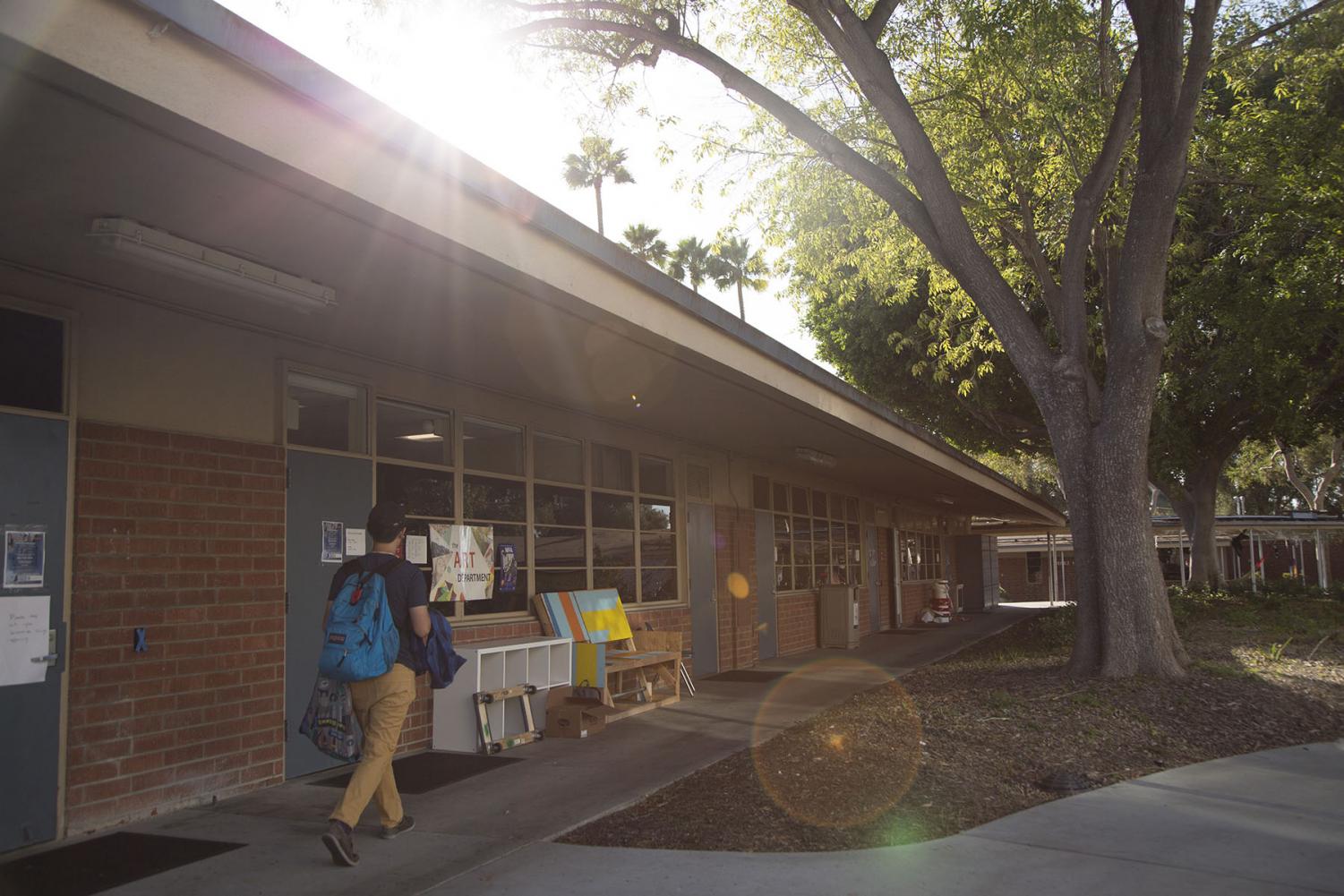Ashley Logue is getting eaten alive.
She is not the only one, either. The junior and her fellow art majors have been dealing with an infestation of mosquitoes in and around several lower campus art buildings over the past few weeks. These mosquitoes, from the Aedes genus, are more commonly known as “day biters” or “ankle biters” because of their tendencies to bite during the daytime and focus on wrists and ankles.
The invasive pests have made life miserable for students like Logue who need to work on art projects in places like the ceramics lab, wood shop and sculpture yard. The bugs have had a particularly strong presence there recently, according to an Oct. 24 art department email obtained by the Chimes.
“Inside and outside [the buildings], it’s awful,” Logue said. “It’s kind of been like the norm… Everyone’s been itching all the time, it’s really gnarly.”
Art students have had to take extra precautions, such as dousing themselves in repellant and covering their wrists and ankles, where the Aedes most often bite.
“It’s kind of been like an inside joke because everyone’s been passing around repellant and it’s really gross,” Logue said.
BIGGER THAN WEST NILE
While the art department’s problem is more recent, these bugs’ invasion on campus and in surrounding areas has lasted much longer and is more widespread. It may even last into the colder months of the year, according to Biola.
Aedes mosquitoes, originally from South America, used to be virtually nonexistent in Southern California. However, that changed in the early 2010s and their population in Los Angeles County has steadily increased over the past seven years, according to Greater Los Angeles County Vector Control District spokeswoman Kelly Middleton.
“Their numbers are getting really high and people are getting a lot of bites,” Middleton said. “Once they move into a neighborhood, you just get tons of bites and it’s really, really difficult to control [the outbreak].”
The good news about Aedes mosquitos, Middleton says, is that they do not carry the West Nile Virus, which is most commonly associated with mosquitos in general. The bad news is that some could carry other, far more dangerous diseases such as yellow fever and even the Zika virus.
“These are issues we’ve never had to worry about [until] now, but now that we do have these mosquitoes living here, we do have the potential for those diseases to get introduced and to start spreading,” Middleton said.
Fortunately, there has yet to be a reported case of any of these diseases tied to mosquitoes in L.A. county, according to Vector Control’s website. However, the chances of that continue to grow as the Aedes population continues to rise and spread. In September, Vector Control responded to over 1,500 service calls, most of which had to do with Aedes mosquitoes, according to public records. That number dipped in October, but only slightly, with 1,100 service calls—746 of which were Aedes-related.
FACILITIES BATTLES THE AEDES
Biola’s facilities management is among those who have called in Vector Control, seeking help in battling infestation of mosquitoes on campus, which the department says dates back to a particularly nasty stretch during the summer months. Environmental Health & Safety Specialist Steve Halberstadt said in an email that this is the most intense, widespread outbreak he has ever seen at Biola.
An internal memo circulated among faculty and staff on Oct. 25 said that Biola “was working closely” with Vector Control to target the mosquitoes’ breeding sites, which for Aedes can occur both indoors and outdoors where there is even a small amount of standing water, such as in potted plants.
Additionally, the art department said in its Oct. 24 email that department members had set several traps such as mosquito bombs and mosquito zappers around the affected buildings. Halberstadt also said that while the Aedes problem persists, facilities management is already seeing a steep downturn in mosquito reports as the weather grows cooler.
Biola and Vector Control have both suggested several ways to fight back against the mosquitoes. Because the Aedes species typically do not travel more than a few hundred feet from their breeding ground, Biola encourages students who are bitten to look around for nearby areas that could hold standing water, and take preventative measures like wearing loose, light clothing and repellants. The California Department of Public Health provides their own list of recommendations for repellants.












